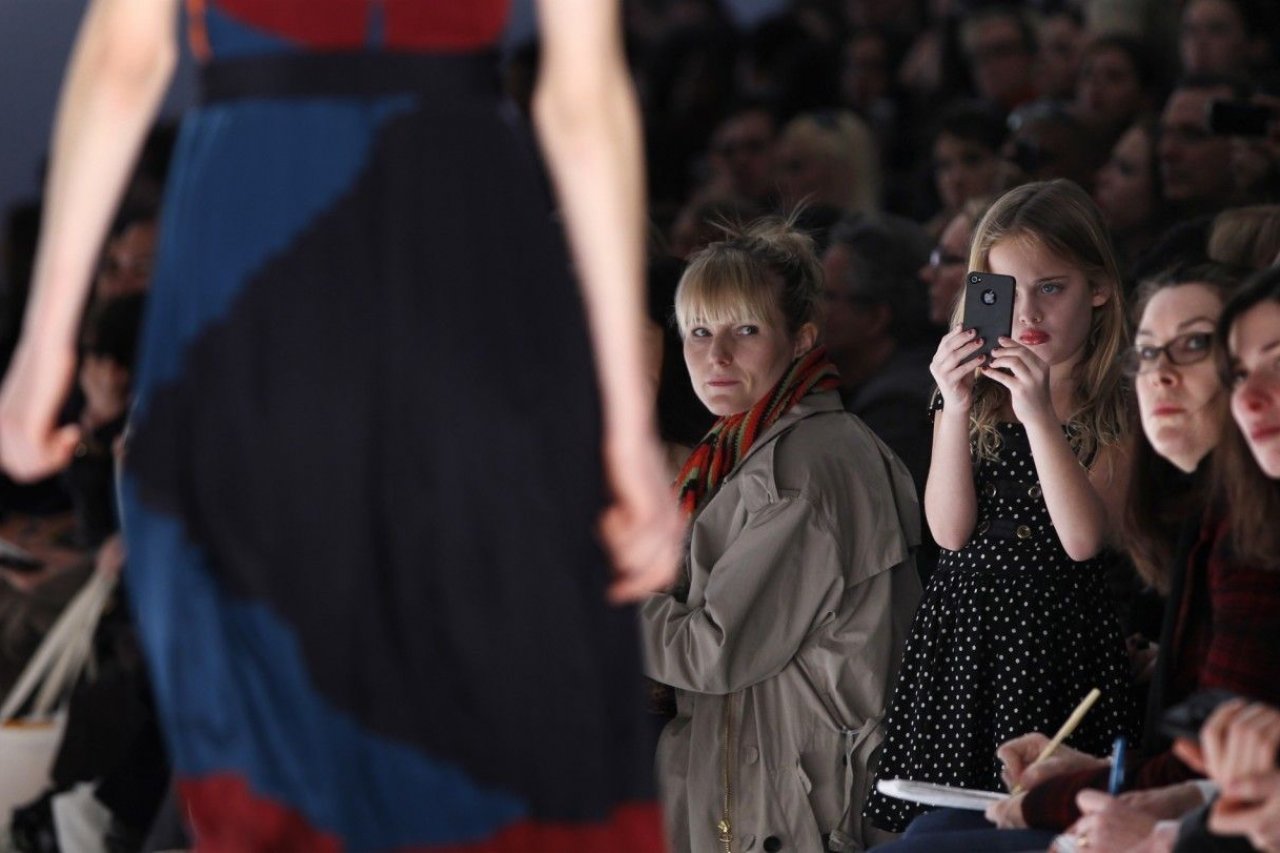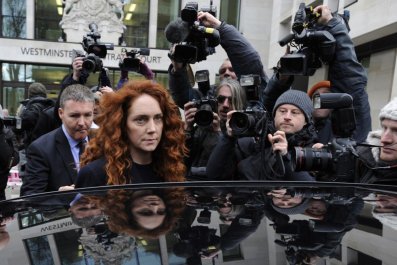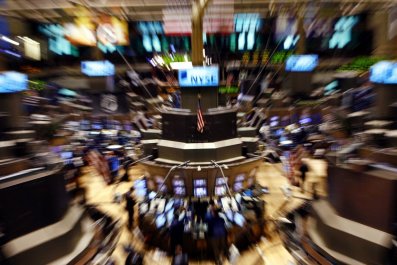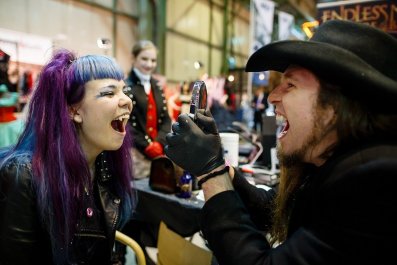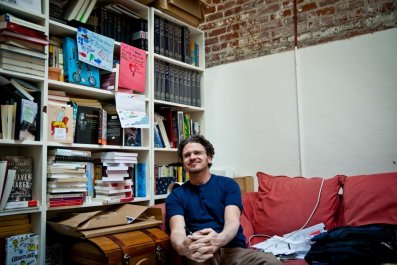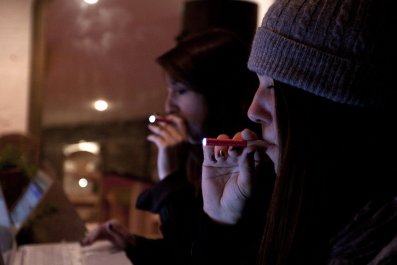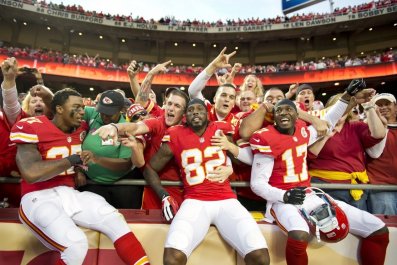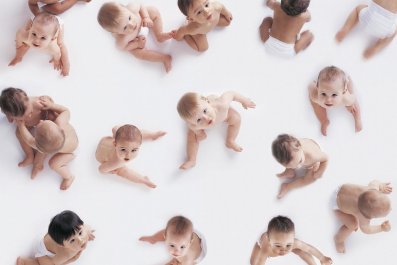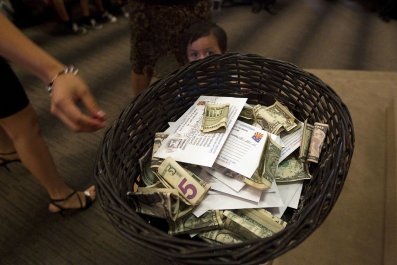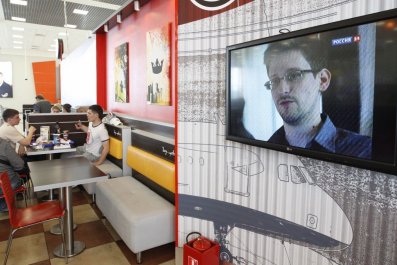The intersection of fashion and technology is like the G-spot - everybody's sure it exists, but nobody can find it.
The fashion-tech hype hit the stratosphere this month thanks to two events: the hiring of Burberry's acclaimed CEO by Apple, and the introduction of Samsung's Galaxy Gear smart watch. The first is pumping up the hope that a marriage of fashion and technology will finally produce something really good; the second is dashing it.
Let's first dismiss this Samsung watch thing. It's the worst of both worlds - neither a useful gadget nor a fashionable watch. It's the spork of fashion-tech. Respected tech reviewer Hiawatha Bray wrote: "Rarely have I tested a more forgettable piece of hardware." His appraisal was one of the nice ones.
Samsung's watch is in a category the tech world calls "wearable technology." Right there, you see a problem: Wearable doesn't mean fashionable or image-enhancing - it just means it can be worn. A beer hat can be worn. It can also make it very likely you'll spend New Year's Eve alone.
The industry needs to aim a lot higher than wearable. We'll know it's on the right track when people say wearing a piece of technology makes them look hot or 10 years younger.
Oh, and then there's Google Glass, the current epitome of wearable technology. All that needs to be said about those is that users have been given a nickname: Glassholes.
So how about Apple? It is already the most fashionable tech brand. And may be the only fashionable tech brand. (In some neighborhoods, like where I live in Harlem, you might get an argument for Beats by Dre.) Apple is greatly admired by the fashion industry, and Mickey Drexler, who is on Apple's board, remade J.Crew by borrowing heavily from the Apple ethos.
In mid-October, Apple hired Burberry CEO Angela Ahrendts, who became a star by overhauling the tired 157-year-old British house of plaid. Burberry is now an exclusive, tech-savvy, highly profitable fashion entity. Ahrendts was hired to run Apple's retail and online stores, but nobody believes that is the full story. Why would someone of her caliber take a down-the-line position unless there were some big plans afoot - like, maybe, creating an Apple fashion brand?
"There has to be a real challenge there for her - the kind that could change the world and make more money than God," says David Wolfe of retail consultancy The Doneger Group. "There's got to be more going on than Apple's admitting."
Adding to the intrigue: Over the summer, Apple hired Paul Deneve, the CEO of designer brand Yves Saint Laurent. (Maybe Deneve can forge a partnership between his old and new employers and call it Yves Apple.)
Now there are two former high-end fashion CEOs inside Apple and an innovative fashion retailer, Drexler, on the board. You know they're not there to brainstorm on ways to finally make a decent version of Apple TV.
There has been plenty of speculation about what Apple might do in fashion. Of course the obvious idea is - ha-ha - iGlasses. Apple researchers have been messing around with that concept since 2006 and apparently haven't come up with anything worth selling under the Apple brand. Unlike Google, Apple doesn't want to be associated with the noun dork.
Apple also has a patent for an iShoe. (How Maxwell Smart didn't already own that patent is a mystery.) Apple's patent is for a shoe that would tell you when it needs to be replaced. But that doesn't seem to be an improvement over something that already does that. It's called a hole.
Everything everyone has tried or even floated in the fashion-tech realm over the past decade has quickly vanished. I went to a Fashion Week show in 2008 where Hewlett-Packard showed off laptops that looked like women's clutches, created in collaboration with designer Vivienne Tam. But...so what? That item is in the fashion-tech graveyard along with the Twitter dress, the Casio calculator watch, and piles of other whiffs.
Yet the fashion people and the tech people keep trying - and now are trying harder than ever. Why? Because they need each other. In both these businesses, newness sells. And both tech and fashion always need something new.
The tech industry is stuck at smartphones and tablets. Fashion, as Wolfe points out, now churns out so many styles so quickly that there's nothing fresh left. "Fashion, as it's been known for a century and a half, is dead in the water," he says, adding that merging an entity like Apple with the high fashion of a top designer promises to "give us a new product that's chic and life-enhancing and exciting all at once. It seems to be on the brink of happening."
So maybe Ahrendts and Deneve and Drexler and Apple will finally push fashion-tech over the hump. Either that, or they'll prove that technology and fashion are like a couple of captive pandas: exciting when they mate, but there's not much to show for all the effort.



